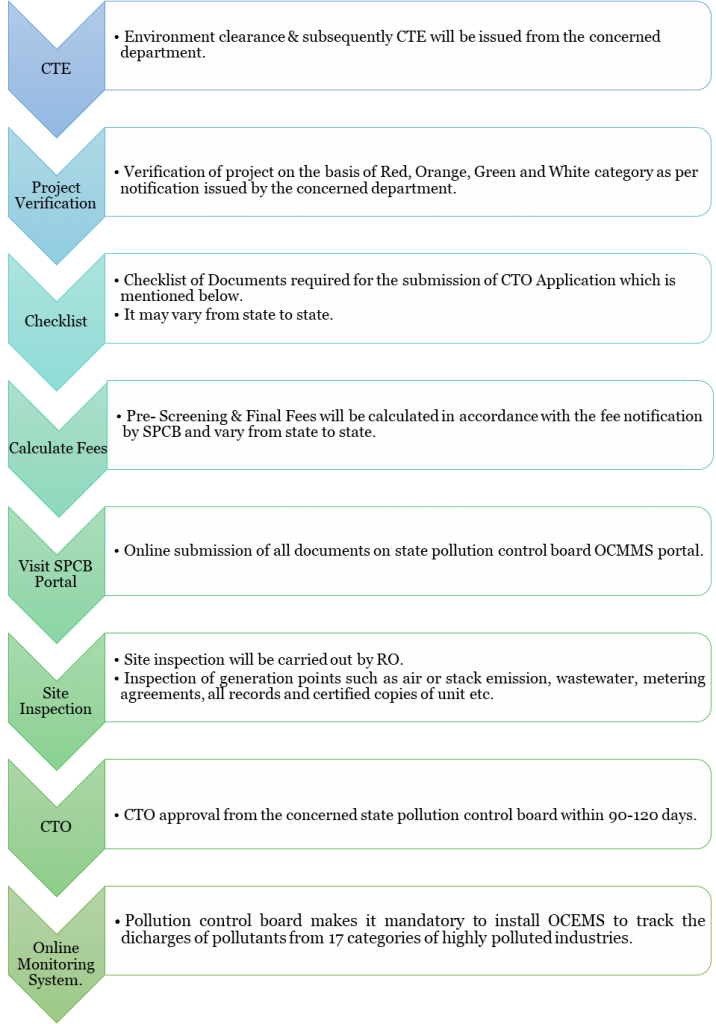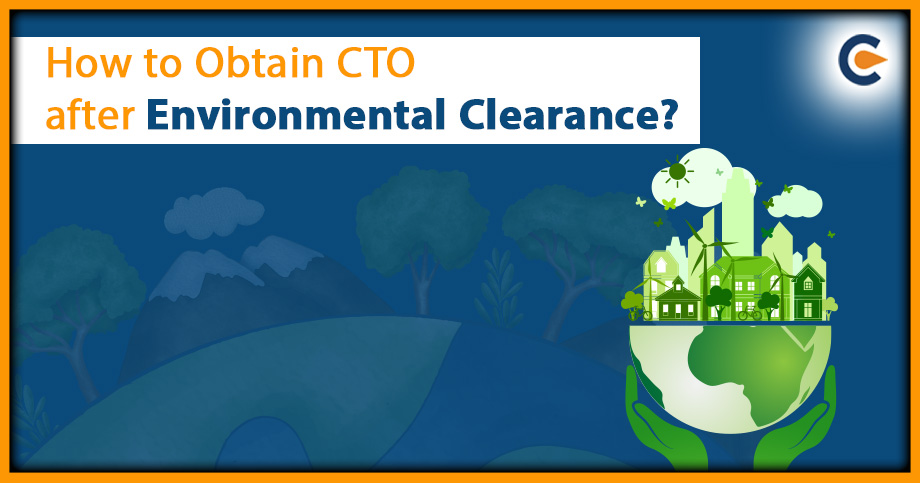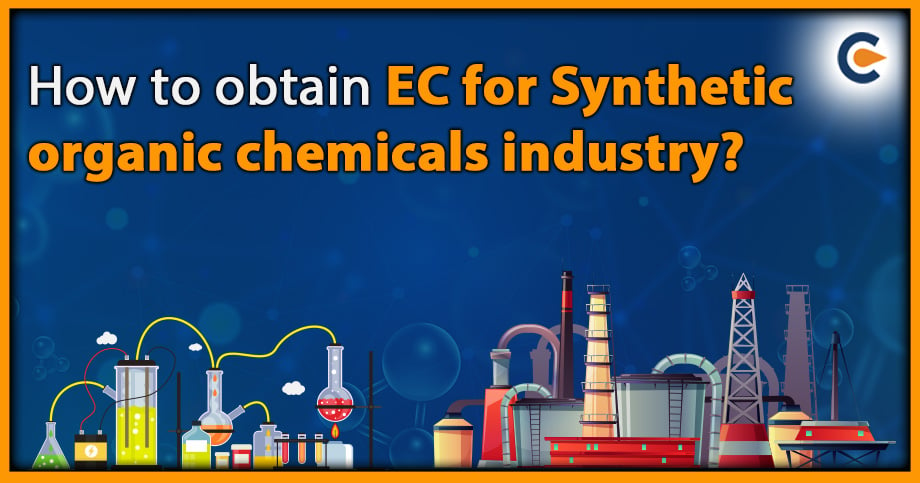In India, it’s a big challenge for industrialists or manufacturers to set up a new industry or unit. For setting up an industry or any project, the project proponent must have a Pollution NOC from the Pollution Control Board or Pollution Control Committee under the Water Act, 1974 and Air Act, 1981, in 2 stages, i.e. CTE and CTO, before starting production. In this context, we will discuss the CTO or pollution NOC required for setting up a new industry before the commencement of Operations.
Types of Pollution NOC
- Consent to Establish (CTE)
- Consent to Operate (CTO)
Difference between CTE and CTO
| Particular | CTE | CTO |
| Need | Must be obtained Before establishing any Industry, plant, or process. | Before starting any operation after the establishment of industry or project. |
| Nature | It is a primary certificate. | It is a Secondary certificate. |
| Validity & Renewal: | 1- 7 Years depending upon the conditions. | Red Category-5 Years Orange Category- 10 Years Green Category-15 Years Note: CTO requires periodic renewal and varies from state to state. |
Rules and Acts Applicable At the Time of CTO NOC
Applicable laws and regulations at the stage of obtaining CTO after Environmental clearance are as follows:
- The Environmental (Protection) Act, 1986, amended 1991
- Air (P&CP) Act, 1981
- Hazardous Waste (Management & Handling) Rules 1989
- Bio-medical Waste (Management & Handling) Rules, 1998
- Public Liability Insurance Rules, 1991 amended 1993
- Manufacture, Storage and Import of Hazardous Chemicals Rules, 1989
- Municipal Solid Waste (Management & Handling) Rules, 2000.
- Water (P&CP) Act, 1974, amended 1988
- Water Cess Act, 1977
Requirement of CTO after Environmental Clearance
Any Mining unit, Industrial unit, Hospital, etc., which cause air and water pollution or discharge effluent into streams, ponds, lakes, land, or any other water body must obtain Consent from SPCB, i.e. consent to operate (CTO).
The project proponent requires consent to operate (CTO) prior to the commencement of operation of any industry, project, or activity under the provisions of the Water (P&CP) Act, 1974, and Air (P&CP) Act, 1981. The project proponent or manufacturer is required to secure this consent to ensure that the industry or project maintains standards related to the operations.
List of Industries or Projects Categorised By the Pollution Control Board That Require CTO
CPCB re-categorised the industries, projects or activities under the Air (P&CP) Act, 1981[1] and the Water (P&CP) Act, 1974, into three major categories based on the “Range of pollution index” for consent management, which is given in the table below:
| S.No. | Category | Pollution Index Score |
| 1 | Red | 60 and above |
| 2 | Orange | 41-59 |
| 3 | Green | 21-40 |
| 4 | White | Upto 20 |
The Consolidated List Of Industries/Projects Is As Follows:
Red Category Of Industries/Projects/Processes/Activities/Mines: River valley projects, Nuclear power plants, Isolated storage of Hazardous chemicals, Lead acid battery manufacturing, mining or beneficiation, Airports, Cement/clinker manufacturing, CETP, TSDF, DG set of capacity more than or equal to 5 MVA capacity, Hotels, pesticides specific intermediates, Pharmaceuticals (excluding formulation), synthetic rubbers, Tanneries etc.
Orange Category Of Industries/Projects/Processes/Activities/Mines: Aluminium and copper extraction from scrap, Biofuel (with boiler), Coal washeries, Flour mills (with washing), Mineral processing plant, New highway construction project, restaurant with more than 25 seats, Stone crusher, water treatment plant etc.
Green Category Of Industries/Projects/Processes/Activities/Mines: All types of commercial testing labs (except diagnostic centres), Ayurvedic and Homeopathic medicines (without boiler), Ready mix cement concrete, mineralised water, Personal protective gear such as face masks, personnel protective equipment (PPEs) etc.
White Category (Exempted From Consent Mechanism): Agarbatti making units, Bio-fertilizer and bio-pesticides without using inorganic chemicals, Cold Storage, Diesel pump repairing and servicing, Electric lamp and CFL manufacturing by assembling only, Fly ash bricks/ block manufacturing, packing of powdered milk, Rope (plastic and cotton), Wax Candles (excluding manufacturing of wax), etc.
Process for Applying For CTO after Environmental Clearance


Documents Required for CTO
The project proponent will submit all documents in serial order as given by SPCB, along with scrutiny fees, through the online portal. The list of documents is as follows:
- Application for CTO in prescribed format under Air and Water Act duly filled and signed by the authorised signatory
- The SPCB calculates consent fees in accordance with the notifications
- Authority letter in favour of applicant/Board of Resolution/Power of Attorney
- Affidavit or undertaking in the prescribed format
- Copy of land documents
- CA Certificate in the prescribed format
- Previous CTE/CTO Compliance report, including monitoring reports from Gazette-notified laboratories
- Details of raw materials, products, and processes
- CGWA NOC/Contract with any agency for the supply of water
- Copy of EC
- Environmental statement in prescribed format under Environmental (Protection)Rules (For Red category Industries)
- Copy of Public Liability Insurance Act (wherever applicable)
Site Inspection for CTO after Environmental Clearance
After submitting the consent to operate (CTO) application form to the concerned SPCB, government officials visit the site to inspect the unit and verify compliance and implement all the conditions of the previous grant consent to establish the following:
- To confirm that the construction at the site is as per the site plan and proposal submitted for consent to establish.
- Verification of information provided in profile and application for consent/authorisation.
- Verification of site layout plan with details of the location of a source of air pollution (Boiler, furnace, reactor, process emission etc.) and water pollution (ETP, STP, CETP, SLF, treated water disposal area, outlet etc.) as proposed during CTE application.
- Verification of compliance with the conditions given in consent to establish.
- Ensuring the complete installation of air and water pollution Control arrangements (technical specifications) as proposed during CTE {ETP, STP, APCS (Air Pollution Control System)} before grant of consent to operate.
Fees for Obtaining CTO
State pollution control Board generates consent fees depending upon the following:
- Category of the Industry
- Capital Investment cost of Industries/Projects
Note: Consent fee may vary from state to state.
Validity and Renewals for CTO after Environmental Clearance
Usually, The State Pollution Control Board (SPCB) will issue consent to operate for 5, 10, and 15 years in the case of red, orange, and green categories, respectively.
| S.No. | Category | Validity Period (In years) |
| 1 | Red | 5 |
| 2 | Orange | 10 |
| 3 | Green | 15 |
Note: It may vary from state to state.
- CTO Renewal application will be made within the prescribed time limit before consent expiry.
Penalties Levied By the Pollution Control Board
Suppose the project proponent operates any project/ industry/ plant without obtaining consent to operate. In that case, the PP will be liable for imprisonment for a term or issued show cause notice with a fine which may extend.
Conclusion
India’s vision towards the National clean air program (NCAP) is to prevent, manage and control air pollution by at least 40% by 2026 and, likewise, prevent and control water pollution under the National Water Mission. Given this mission, all the industrial sectors/projects require consent to establish and operate from the pollution control board under Air & Water Act. However, to obtain CTO after Environmental clearance, the project proponent requires a technical understanding of relevant issues and the measures that work in such circumstances, which can be made effective with the guidance of Environmental professionals.











